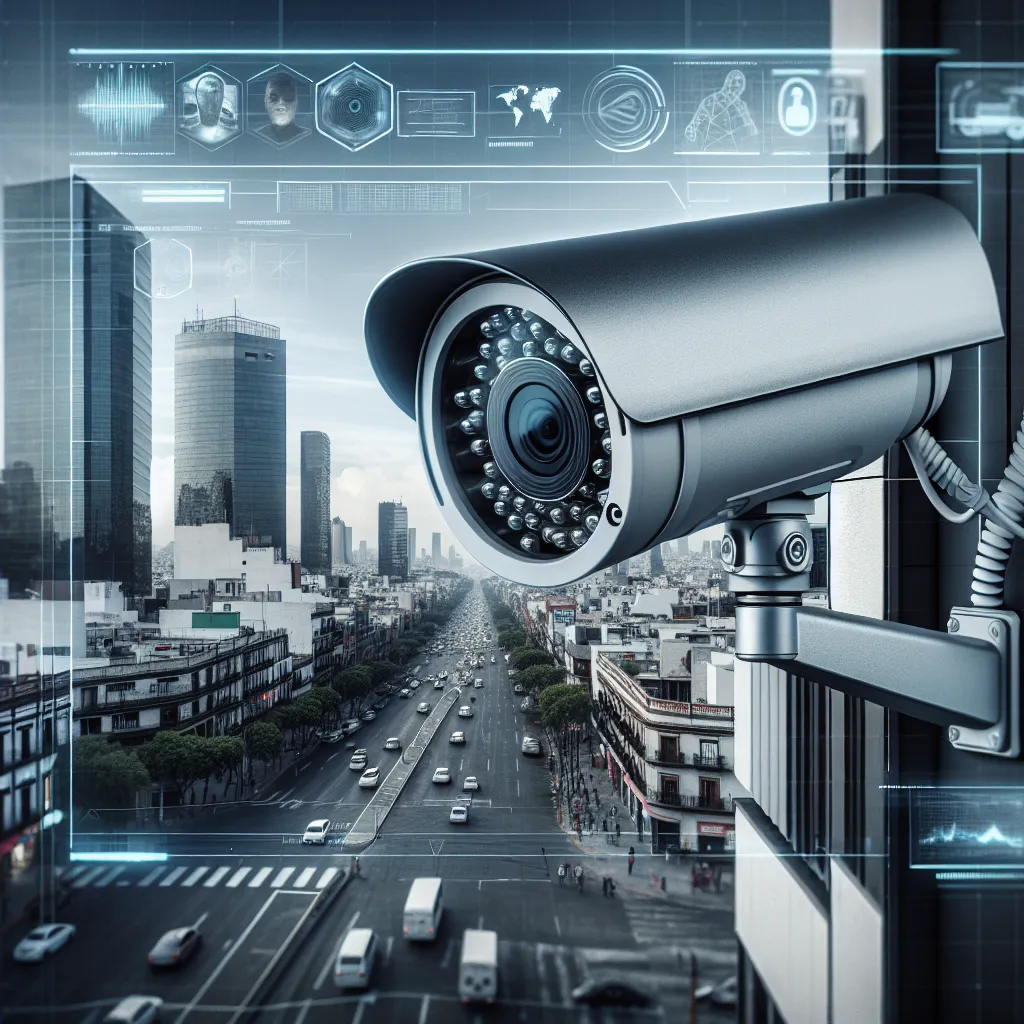Smart Surveillance Camera in Mexico: Enhancing Security Measures
Smart Surveillance Camera in Mexico: Enhancing Security Measures
In recent years, Mexico has faced numerous security challenges due to rising crime rates and the presence of organized criminal groups. To combat these issues and ensure the safety of its citizens, the Mexican government has been actively investing in advanced technologies, one of which is the implementation of smart surveillance cameras.

The Need for Smart Surveillance Cameras
Mexico has been grappling with crime and violence for many years, particularly in urban areas. Drug trafficking, kidnappings, and robberies have become commonplace, posing a significant threat to the safety and well-being of the population. Traditional surveillance systems, such as closed-circuit television (CCTV) cameras, have been in place for decades, but they often fall short in effectively monitoring and preventing criminal activities.
Smart surveillance cameras, on the other hand, offer a range of advanced capabilities that can greatly enhance security measures across Mexico. These cameras are equipped with cutting-edge technologies, including artificial intelligence (AI), facial recognition, and real-time analytics, which allow for more accurate and efficient monitoring.
Benefits of Smart Surveillance Cameras
The integration of smart surveillance cameras in Mexico’s security infrastructure brings several benefits to the table. Let’s explore some of the key advantages:
1. Real-time Monitoring and Alerts
Smart surveillance cameras are capable of analyzing video feeds in real-time, allowing authorities to promptly detect and respond to potential security threats. Advanced algorithms and AI-powered analytics can identify suspicious behavior, unauthorized access, or any other abnormal activities, triggering instant alerts to security personnel.
2. Facial Recognition Technology
With the help of facial recognition technology, smart surveillance cameras can identify individuals in real-time, even in crowded areas. This capability is particularly valuable in tracking known criminals or individuals on watchlists, aiding law enforcement agencies in their efforts to combat organized crime.
3. Improved Crime Prevention
The presence of smart surveillance cameras acts as a deterrent to potential criminals. Knowing that they are being closely monitored by advanced systems, criminals are less likely to engage in illegal activities, leading to a decrease in crime rates. This proactive approach to crime prevention contributes to creating a safer environment for the general public.
4. Enhanced Investigation and Forensic Capabilities
Smart surveillance cameras provide valuable evidence for investigations and forensic analysis. High-definition video footage, combined with AI-powered analytics, can help law enforcement agencies identify suspects, reconstruct crime scenes, and gather crucial evidence. This not only streamlines the investigation process but also increases the chances of successful prosecutions.
5. Integration with Other Security Systems
Smart surveillance cameras can be seamlessly integrated with other security systems, such as access control systems, alarm systems, and emergency response systems. This integration allows for a synchronized response to security incidents, enabling faster and more effective crisis management.
Implementation of Smart Surveillance Cameras in Mexico
The Mexican government, in collaboration with various agencies and private entities, has undertaken several initiatives to implement smart surveillance cameras across the country. These efforts aim to enhance public safety and crime prevention while ensuring the protection of individual privacy.
One notable project is the City Surveillance System in Mexico City, which involves the installation of thousands of smart surveillance cameras throughout the city. These cameras utilize advanced analytics to detect criminal activities and alert law enforcement agencies. The system also enables the integration of other security systems, creating a comprehensive security infrastructure.
Furthermore, the Mexican government has been actively promoting public-private partnerships to accelerate the adoption of smart surveillance cameras. By collaborating with private companies, the government can leverage their expertise and resources to deploy these advanced technologies more efficiently.
Privacy Concerns and Ethical Considerations
While the implementation of smart surveillance cameras brings significant benefits, it also raises concerns regarding privacy and ethical implications. The use of facial recognition technology, for instance, has sparked debates concerning individual privacy rights and potential misuse of personal data.
To address these concerns, it is crucial for the Mexican government to establish clear regulations and guidelines regarding the usage and storage of data collected by smart surveillance cameras. Striking a balance between security and privacy is essential to ensure that these technologies are used responsibly and in compliance with human rights standards.
The Future of Smart Surveillance in Mexico
The integration of smart surveillance cameras in Mexico represents a significant step towards enhancing security measures and combating crime. As technology continues to evolve, the capabilities of these cameras will only improve, providing even more effective tools for law enforcement agencies.
In the future, we can expect the implementation of advanced features, such as behavioral analytics, predictive modeling, and automated response systems. These advancements will further streamline security operations and enable authorities to proactively address potential threats.
Moreover, the integration of smart surveillance cameras with Internet of Things (IoT) devices and cloud-based platforms will allow for more comprehensive data analysis and information sharing. This interconnected approach will enable law enforcement agencies to gain valuable insights and collaborate more effectively in their crime prevention efforts.
Conclusion
The adoption of smart surveillance cameras in Mexico is a significant step towards enhancing public safety and combating crime. These advanced technologies offer several advantages, including real-time monitoring, facial recognition, improved crime prevention, and enhanced investigation capabilities. However, it is crucial to address privacy concerns and establish regulations to ensure responsible usage.
As Mexico continues to invest in smart surveillance systems, the country will witness a transformation in its security infrastructure. By leveraging the power of technology, Mexico is taking proactive measures to create a safer environment for its citizens and deter criminal activities.
